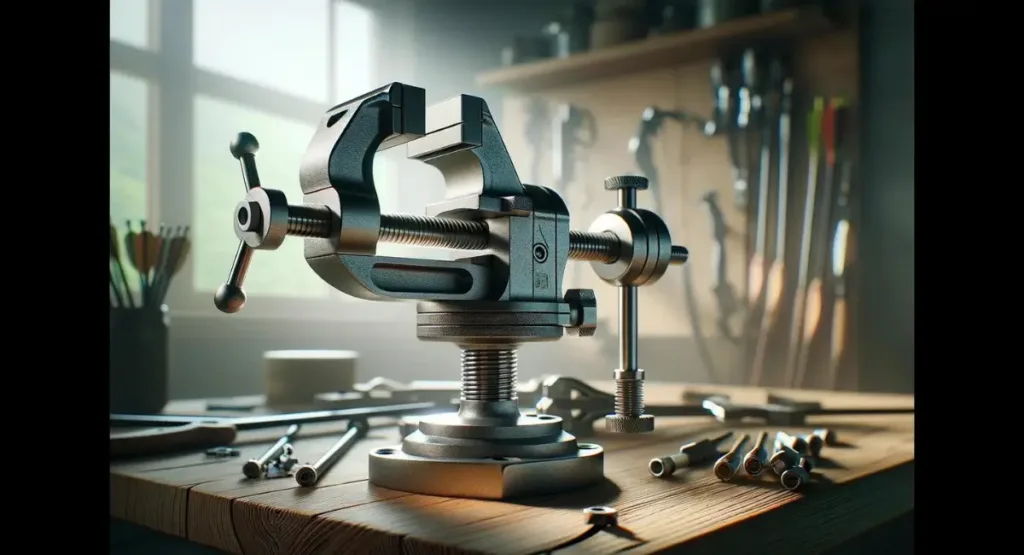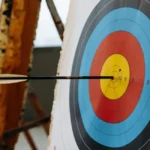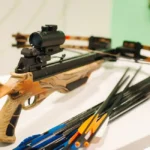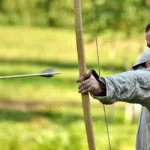For the devoted archer or professional bow technician, the bow vice is an indispensable tool that ensures precision, consistency, and safety. It’s the anchor point of fine-tuning archery equipment, responsible for holding the bow in place securely as it undergoes various adjustments.
The effectiveness of a bow vice goes beyond the tool itself; it’s about mastering the subtle art of using it to elevate your archery experience. Whether you’re a seasoned veteran of the sport or a beginner eager to perfect your setup, this guide is packed with essential tips and tricks for making the most of your bow vice.
The Importance of Bow Vices in Archery
Every profession has its set of tools, and in archery, the bow vice takes center stage. Think of it as the surgeon’s operating table—stable, reliable, and critical to the success of the operation. Without a bow vice, vital adjustments such as cam timing, draw length, and string serving become not only challenging but also potentially hazardous. This section will underline the pivotal role a bow vice plays in archery and why learning to use it effectively is a game-changer for any enthusiast.
Understanding the Functionality
Bow vices provide a stable working platform for a bow, enabling archers to carry out an array of tasks that require controlled precision. They come in several designs tailored to different types of bows, from compound to traditional. By utilizing the vice correctly, archers can keep bows steady and safe, enabling the necessary adjustments without the risk of slippage or damage.
The Versatility of Bow Vices
A quality bow vice is designed to handle multiple functions, making it a multi-purpose piece of archery maintenance equipment. From string changes and peep sight installations to cam adjustments and even string twisting, the right bow vice streamlines these processes and offers a consistent setup each time.
Setting Up the Bow Vice
Before you can begin making those critical adjustments to your bow, you first must set up the bow vice correctly. This involves selecting the right location for stability and making the necessary adjustments to fit your bow’s specifications.
Location, Location, Location
The stability of the vice largely rests on its placement. Ideally, mount your bow vice to a sturdy workbench or table, ensuring the surface can handle the pressure of clamping your bow. The table’s edge or corner often provides the best dynamic balance and convenient access.
Tailoring the Vice to Your Bow
Vices typically offer a range of adjustments, including height, width, and angle. Match these dimensions to fit your specific bow model, using any included instructions or recommended settings. A well-fitted vice minimizes the chance of imbalance and rotation during adjustments.
Securing the Bow in the Vice
While stability is the primary purpose of a bow vice, the technique used to secure the bow can significantly enhance or detract from its effectiveness. A secure bow is a safe bow, and it’s pivotal to ensure the bow is held firmly without any undue stress on the limbs.
The 5-Point Hold
To achieve maximum stability and even pressure, adopt the 5-point hold method. This involves securing the bow at the limb tips, riser, and cam or wheel for compound bows. With the bow firmly clamped, test for any movement or vibration by attempting to wiggle the bow. A well-secured bow should remain still.
Preventing Overtightening
One of the common mistakes when using a bow vice is the temptation to overtighten the clamps, which can lead to limb damage in the long term. Opt for firm pressure that keeps the bow steady without squeezing it excessively. Pay particular attention to limbs and riser to ensure there’s no distortion occurring.
Fine-Tuning Techniques
With your bow securely in place, it’s time to move onto the more intricate adjustments that elevate your bow’s performance. These tweaks can vary from individual to individual, contingent upon shooting style, arrow type, and bow preference.
Adjusting Draw Weight
A consistent draw weight is essential for accuracy and muscle memory. Lower the bow’s draw weight to its minimum setting before adjusting it to your desired poundage. Remember to measure the draw weight after each step to ensure you’re on track.
Timing is Everything
When it comes to cam timing, precision reigns supreme. Use a timing tool to check for synchronization between the cams or wheels. Adjust string lengths as necessary to align nocking points and improve accuracy.
Center Shot Alignment
The center shot refers to the cam or wheel aligning with the arrow shaft. Proper alignment minimizes the risk of accidental contact with the arrow rest, which can drastically affect shot accuracy. Make small adjustments and test each time until you find the optimal center shot alignment.
Maintenance and Safety Tips
A well-maintained bow vice is as important as the bow it services. Just as you meticulously maintain your bow, the vice needs regular attention to ensure it continues to serve you without failure.
Routine Checks for Wear
Inspect the vice for signs of wear, particularly in the clamps and moving parts. Ensure no screws or bolts have come loose, which could compromise the vice’s stability. Lubricate any hinges or slides as recommended by the manufacturer.
Regular Cleaning
Pay close attention to keeping the vice clean, especially after waxing a bowstring. String wax can attract dust and grit, which over time can affect the vice’s operation. Clean the vice with a brush and a mild solvent, being careful not to damage any critical surfaces.
Advanced Tips for Precision
For bow technicians or archers seeking the highest level of precision in their equipment, the bow vice can facilitate a range of advanced adjustments that require a skilled hand and a keen eye.
Mastering String Serving
Serving serves as the armor for your bow’s string, protecting it from the repeated wear of arrow nocking. A well-served string is durable and offers a consistent nocking point for arrows. For this, ensure your serving is tightly and evenly wrapped.
Limb Alignment
Proper limb alignment is essential for bow stability and shot consistency. Use a laser or alignment tool to check if the limbs are bending symmetrically. Adjustments to limb pockets or shims may be necessary to attain perfect alignment.
Comprehensive Bow Tuning
When you’ve mastered individual elements of bow tuning, it’s time to put them together. Comprehensive bow tuning involves setting draw weight, aligning the nocking point, adjusting the center shot, optimizing arrow rest, and ensuring balance and grip comfort. Each of these elements must work in harmony to produce the best bow performance possible.
Conclusion
A bow vice is more than a tool; it’s a partner in your archery journey. By setting it up correctly, using it effectively, and applying these tips and tricks, you can ensure that it becomes a valuable part of your archery toolkit. Regular maintenance, advanced tuning techniques, and a cautious, safety-first approach will guarantee you get the most accurate shots out of your bow.
With these insights, bow technicians and archery enthusiasts can refine their skills, enhance their experience, and unlock the full potential of their bow vice. Remember, practice and patience are just as vital as the tools you use in the sport of archery. By continuing to learn and improve, you’ll find that each shot becomes more precise and satisfying than the last.
Recent Posts







